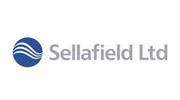Progress Scores
The progress measures aim to capture the progress that pupils make from the end of Key Stage 1 to the end of primary school. They are a type of value-added measure, which means that pupils’ results are compared to the actual achievements of other pupils nationally with similar prior attainment.
This type of progress measure rewards schools for making progress with all of their pupils, whether they are low-, middle- or high-attainers. Any increase in attainment achieved by each pupil is reflected in the school’s progress scores. This measure is a school-level accountability measure.
Progress is calculated for individual pupils solely in order to calculate the school’s overall progress scores.
A school’s progress scores in English reading, English writing and mathematics are calculated as the average of its pupils’ subject progress scores. These scores give an indication of whether, as a group, pupils in the school made above or below average progress in a subject compared with pupils with similar starting points in other schools.
Progress scores are calculated for individual pupils for the sole purpose of constructing a school progress score. Pupil scores are calculated separately for English reading, English writing and mathematics.
Detail showing how these are calculated can be found here





